I know what you’re thinking: ‘Aha, shouldn’t that be ‘Roobarb and Custard’? Well, no actually! Everybody nostalgically refers to it as Roobarb and Custard, but a quick look at the opening titles reveals that in the early days the programme is simply called Roobarb. It was only later, in the second series that the bright pink cat Custard gets a reference in the title, with the show becoming Roobarb and Custard Too. And quite rightly; it’s only fair that the manically-grinning mischief-making cat gets equally billing considering how much work he puts in to upset his canine companion.
Another BBC masterpiece (and one always brought up in the ‘oh they don’t make children’s programmes like they used to’ debate much visited by anybody too old for current kids’ shows), the first of the 30 original five minute Roobarb episodes was broadcast on 21 October 1974 and shown ahead of the early evening news.
Roobarb is a green dog (sounds strange until you see the colours employed in the rest of the programme) who has an endless enthusiasm for adventure, and spends his time joyfully trying to make all kinds of inspired plans work. These are always hampered by the dastardly machinations of next door’s pet, Custard – a cat with a big smirk and an even bigger penchant for seeing Roobarb mess up. They’re quite evenly matched however, and both get their fair share of the spoils. Sometimes Custard will emerge triumphant as Roobarb’s fun is ruined, but on other occasions Roobarb will turn the tables and thwart Custard’s attempt to sabotage him. In When Custard Got Too Near The Bone, an attempt by the frisky feline to wreck Roobarb’s preparations for his garden party game ‘Find the bone’ backfires. Seeing Roobarb hiding his bones in carefully dug holes, Custard sells off fake deeds to the land to a bunch of gruff bone-prospector dogs, who are none too pleased when they realise that Roobarb’s prizes are made of rubber. Custard’s grin soon fades as the dogs want revenge and the last we see of the not-so-cunning cat is his back view as he disappears over the horizon.
As well as our two anti-heroes, the garden (for this is where all the action takes place) is also home to a gathering of nosey and equally luridly coloured birds. Sitting in the tree above Roobarb’s head they pass their judgement on the pair’s mostly good nature sparring through off-hand and often sarcastic remarks. Mole and Rookie also pop up from time to time to offer their opinions.
The much-loved chirpy canine was based on a real dog, belonging to Grange Calveley, the creator of the programme. On bringing their new Welsh border collie back to live with them, Calveley and his wife Hanny watched in amusement as the first thing he did was to ‘water’ the rhubarb that was growing in their back garden. Their pet had a name, and soon after his cartoon alter ego sprang to life too. Calveley used his spare time at work to create the beginnings of Roobarb and his world, and, recognising the value in what he’d produced, he quickly attained the copyright on the name and concept.
It took a while to convince the BBC that Roobarb should become the first British animated television programme, but once they’d agreed in principal Calveley, together with Bob Godfrey (who was already heavily involved in animation, and would go on to write, narrate and direct Henry’s Cat) and Peter Green (an animator from Australia) made a black and white pilot and took it in. It was only 30 seconds long, but it impressed the BBC’s Head of Children’s Television…eventually. Months after watching the pilot, and long after Calveley thought he wouldn’t hear from them again, the call came through to announce that they wanted Calveley to produce 30 five minute Roobarb films.
The same team then worked on the initial episode When Roobarb Made a Spike, the first outing of the headache-inducing wobbly animation, clever and witty scripts and the totally bonkers theme music that was devised by Johnny Hawksworth. Which, incidentally, you can play over the top of ANY video of dogs bounding about and it fits perfectly. Go on, try it. See?
This first episode won legions of fans: in 1973 it was screened not only at The National Film Theatre under the heading ‘One of the outstanding short films of the year’ but also as part of the Annecy Film Festival in France, and then as part of ‘The Best of Annecy’ programme shown later. The LUCCA9 International Exhibition of Animated Films in Italy selected it as one of the best international animations. In the UK, Roobarb brought in an audience of over 7 million people by the third week of it being shown. In comparison, The Wombles didn’t manage this for a year.
Of course, a big credit for the popularity of the programme must be given to the man who brought Roobarb and his contemporaries to life, the talented Richard Briers. Bringing an unique voice to each character, it was a relief to fans of the show when he came back on board for the second series over a quarter of a decade later!
You’d be forgiven for thinking that if a programme hasn’t come back for a second series 30 years after the first one has finished then you probably aren’t going to see any new episodes. In Roobarb’s case you’d have been wrong. Continuous repeats over the years led to the show being voted ‘Britain’s Best Animated Cartoon Characters’ in 2000, and when Calveley introduced his tribute website to the playful pair he was inundated with requests for new episodes. And so, in 2005 39 episodes of Roobarb and Custard Too were broadcast on Five; a faithful reproduction of the original, with a few modern twists.
Roobarb is still hatching madcap schemes but now with the help of his ‘BoneFone’, a badly-made computer and Mouse, the computer expert slash – um, mouse - from Silly Cone Valley (geddit?). The wobbly animation, vivid colours and slapstick plots remain, and the nature of the scripts means that it’s not just children who love it, grown-ups will laugh along with it too.
There is something uniquely charming about the protagonists in this cartoon. Their imaginative schemes plus their mostly funny (but often terrible) jokes endear them to their audience, and it doesn’t matter how many times either of them gets knocked back - you just know they will start planning the next escapade as soon as they have extricated themselves from the current one.
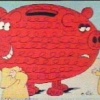
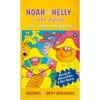


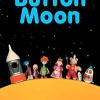

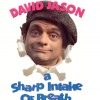
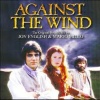
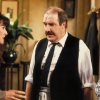
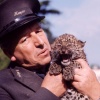
Do You Remember Roobarb?
Do You Remember Roobarb?